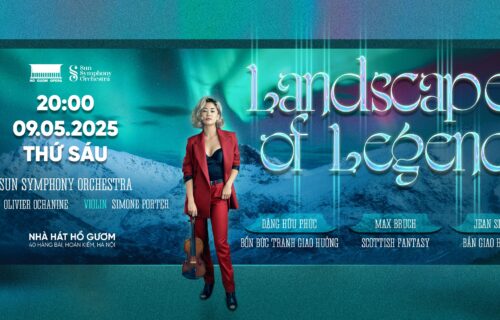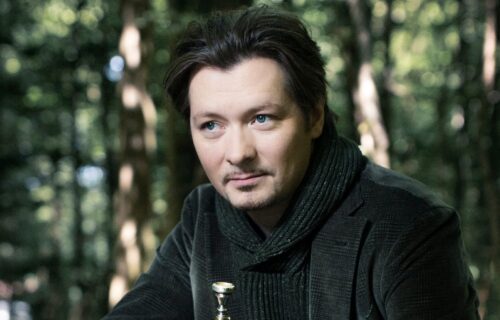Staff writer John Creevy from Vietnam Times Magazine reviews “Danzas Del Fuego: The Rhythm of the Night,” a new performance by Hanoi’s acclaimed Sun Symphony Orchestra.
In his groundbreaking work “Ways of Seeing,” John Berger lampooned the world of art criticism for gatekeeping fine art from the middle and working classes. Fine art, he, had something to offer people from all types of backgrounds, not just the social elite. I was thinking of Berger’s words as I sat in the second row of the Hanoi Opera House on Sunday, December 11th.

The call went out for people to take their seats in Vietnamese and then in English. I could see the typical types in the theater’s white and gold balconies: old women in fur, men in sports coats and polo-neck sweaters. But there were others too: young couples, Western and Vietnamese, some dressed up, some casual, all sitting side-by-side in red velvet seats.
The overhead lights dimmed and the stage lights shone in gold that glistened in the chandelier above. Applause echoed throughout the grand hall. The violinists were the first to take their posts. They played a long tentative note in unison as the other musicians walked on stage. Olivier Ochanine, the Sun Symphony Orchestra’s charming conductor, took his ovation with a bow.

The opener, “intermezzo,” from Gerónimo Giménez’s, La Boda de Luis Alonso established the tone of the evening. Rhythmic castanets set the tempo, followed by racy strings and deep booming base. It’s a vivacious and playful piece characteristic of its originator’s affection for Spanish dance.
The performance culminated in a crescendo of cymbals. The crowd cheered as the virtuoso guitarist, Bokyung Byun, took her place beside Mr. Ochanine at the center of the stage. She set off the galloping melody from Joaquin Rorigo’s Concierto de Aranjuez with the rest of the orchestra in hot pursuit.
The aptly named opening movement, Allegro con spirito, continued the evening’s theme of liveliness before shifting to a more somber and reflective second movement. It was the first time I’d heard what I now consider to be Rodrigo’s masterpiece. And even though I didn’t know that the song represented a conversation between the composer and God after the miscarriage of his son, I believe that anyone in that crowd would have recognized a dialogue between the personal and the divine in front of them. It was a fitting end to the first half of the evening.
I sat there watching the audience. It was the first time I’d seen a live orchestra, listened to the sweet clarity of strings, the brass piping in like birds in trees. I looked from the turtle-necked audience members to the young couple in front of me dressed in hoodies and sneakers and wondered if they too were here with fresh eyes.

The pace picked back up again in the second half. Bokyung Byun took her seat in the front row with the rest of the audience to watch the Sun Symphony Orchestra’s production of El Sombrero de Tres Picos. A farcical ballet based on a nineteenth century novel of the same name; one does not need to see dancers to understand the heart of Manuel de Falla’s work. You can hear the giddy jostle and sway of masculine and feminine in the music itself. I watched the young couple in front of me nod along to the music. I could see from my angle that his eyes were closed as her head came to rest on his shoulder at the ballet’s end.

This musical tryst continued with Arturo Márquez’s acclaimed Danzón No. 2. As with the other movements in Danzas del Fuego, Márquez’s magnum opus is rooted in popular music. Whereas Zarzuelas like La Boda de Luis Alonso often borrowed from the popular music of their time and the Concierto de Aranjuez was evocative of Spanish folk music, Danzón No. 2 takes its cue from the eponymous Latin genre of popular dance. Danzón No. 2’s sound is, as its creator put it, one of “sensuality and qualitative seriousness.” It’s a sexy song, one that puts the listener in mind of two lovers dancing passionately around an old Mexican ballroom.
The rhythm moved through the crowd, feet-tapping, bald heads bobbing, the young woman in front of me doing the cha-cha her seat. Young and old, the well-to-do and not-so-well-to-do, all moving to the music in their own subtle way. It was only then that I realized that the Sun Symphony Orchestra’s latest ambition had been a success. This was a dance. And dancing is for everyone.
Credit: VIETNAMTIMES.ORG.VN








